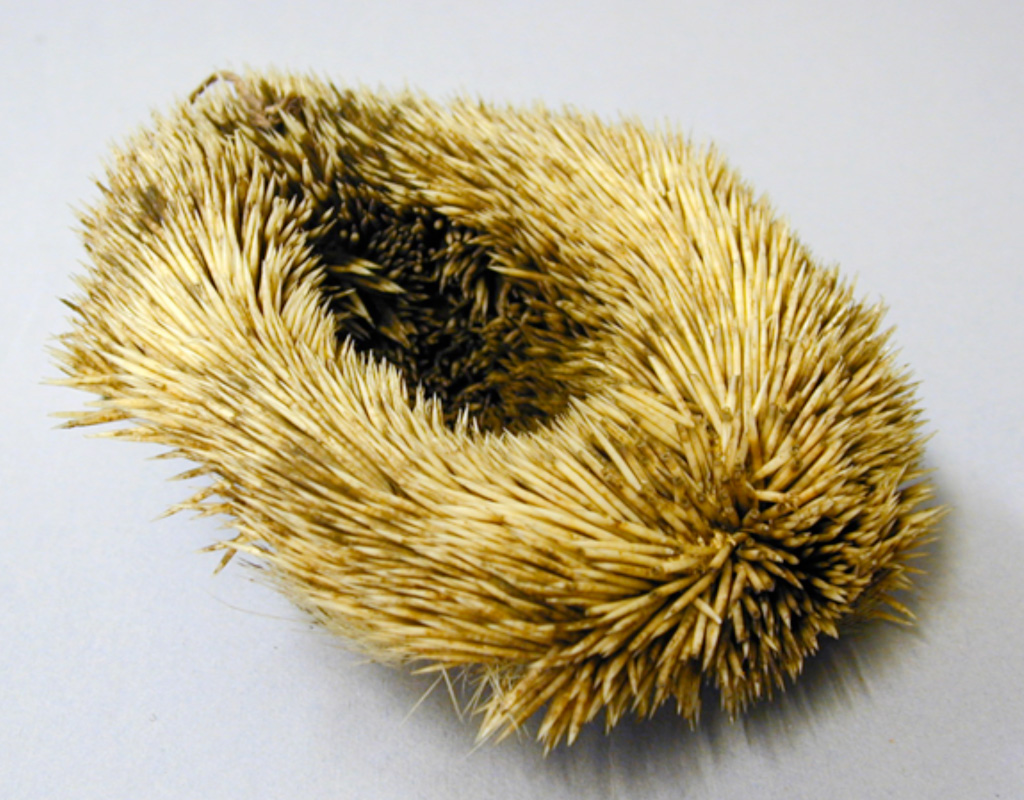Hedgehog hairbrush
Nigeria, early 20th century
 Collected and donated by Olive Temple in 1913; 1913.31.71The needles of boars, porcupines and hedgehogs have been used since at least the Roman period to create hairbrushes. Rather than insert individual needles into a perforated base and secure them with wire, this example from West Africa shows that the entire skin of the animal has been turned into a brush with a central hollowed section for grasping in the fingers. Yet West Africa remained one of the major exporters of the ivory used to make the backs of high-quality brushes until the mid-20th century.
Collected and donated by Olive Temple in 1913; 1913.31.71The needles of boars, porcupines and hedgehogs have been used since at least the Roman period to create hairbrushes. Rather than insert individual needles into a perforated base and secure them with wire, this example from West Africa shows that the entire skin of the animal has been turned into a brush with a central hollowed section for grasping in the fingers. Yet West Africa remained one of the major exporters of the ivory used to make the backs of high-quality brushes until the mid-20th century.
Brushing or combing not only detangles hair but also helps distribute the natural oils that can be depleted by regular washing. Along with the comb and razor (and, more recently, scissors) the hairbrush was a vital tool for teasing and shaping hair into the often-elaborate coiffures favoured in Nigeria.
In everyday African life both men and women are expected to have well-tended hairstyles. Coiffures can be very elaborate, incorporating ornaments of gold or other metals, coral, glass, stone or ostrich-eggshell beads, fruit seeds, shells or combs. They could be dyed, oiled, perfumed, modeled into crests, or shaven evenly or asymmetrically. They might also feature extensions of human hair, vegetable fibre, sinew or cotton.
